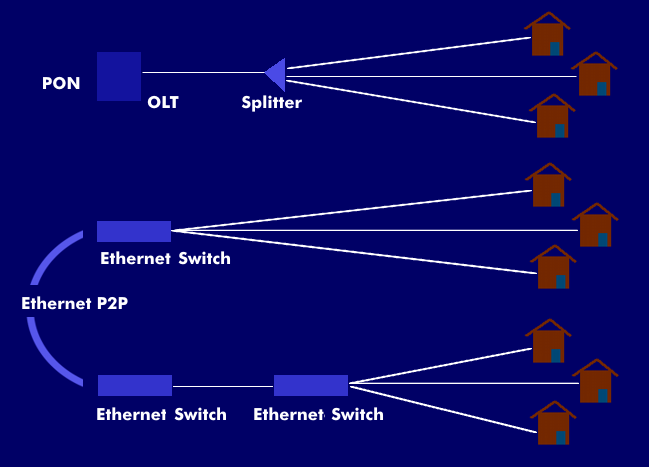fiber to the home (FTTH)
FTTH technology, Fiber to the Home (FTTH), like all other FTTL technologies, is a fiber optic connection technology in which the fiber is routed from the Point of Presence( PoP) in the local exchange in empty conduits to the end customer's home, where it is terminated with an Optical Network Termination( ONT) in the house handover point. The direct fiber optic connection is often interrupted by fiber optic concentration points, where the connections from several houses are joined together.
FTTH connection technology can be used for triple-play services and all future interactive broadband distribution services. The bridgeable distance is sufficient due to the use of optical fibers.
Fiber to the Home (FTTH) provides the subscriber with a broadband connection with transmission rates of 10 Mbit/s, 100 Mbit/s and higher for upstream and downstream. There are two topologies: Ethernet Point to Point( P2P) and Passive Optical Network( PON). With Ethernet P2P, a fixed link is switched between the local exchange and the customer endpoint, allowing individual upgrades.
In contrast, the passive optical network (PON) establishes point-to-multipoint( P2MP) connections. The PON network requires fewer optical ports and fewer fibers and uses shared media. Thus, with Gigabit PON( GPON) with a data rate of 2.5 Gbit/s, which is divided via a splitter with 32 ports, each subscriber has a purely mathematical 78 Mbit/s available, and with 64 ports, only 39 Mbit/s. As far as 10 Gigabit EPON is concerned, the IEEE802.3avworking group is dealing with this topic.
For the concerns of FTTH technology, there is the non-profit FTTH Council Europe, to which well-known manufacturers and providers belong.

